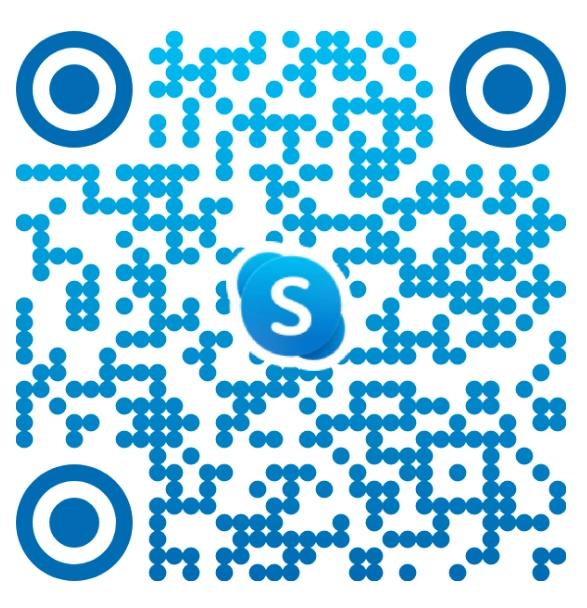Top Deep Learning Frameworks for Building Advanced AI Models
Introduction
Deep learning frameworks have become essential tools in building modern artificial intelligence (AI) systems. These frameworks simplify the process of creating and training complex neural networks, which are at the heart of deep learning applications. From image recognition to natural language processing, deep learning is the driving force behind today’s most advanced AI technologies.
For professionals and organizations looking to build high-performance AI systems, selecting the right deep learning or machine learning framework is critical. With so many options available, it can be challenging to choose the best one for your needs. Some frameworks offer faster training, while others are better for research or production-level deployment. In this blog, we’ll explore and compare the best deep learning frameworks 2025 has to offer.
You’ll learn about top AI frameworks for deep learning, their core features, real-world use cases, and how they compare. Whether you’re seeking tools for rapid prototyping or robust AI model-building tools for enterprise-grade deployment, this guide will help you make the right choice.
Why Deep Learning Frameworks Matter
Deep learning frameworks are the backbone of modern machine learning workflows, making advanced AI development more accessible and scalable. These powerful deep learning libraries allow developers to build and train deep neural networks without needing to manage low-level operations manually.
Here’s why they matter:
- Simplify Development: Most DL frameworks offer pre-built components and automation, reducing complexity and speeding up the development process.
- Accelerate Training: With built-in support for GPU/TPU acceleration, these machine learning frameworks enable faster and more efficient model training.
- Enable Innovation: Tools like TensorFlow, Keras, and PyTorch support cutting-edge research and experimentation, enabling rapid advances in AI.
- Cross-platform Deployment: Many frameworks integrate with cloud platforms, mobile, and edge devices, supporting flexible, scalable deployments.
- Community Support: Open-source deep learning libraries benefit from large, active communities that contribute regular updates, tools, and support.
In short, these frameworks serve as core tools for AI model-building and deep learning deployment. Businesses can use AI automation services built on these frameworks to bridge the gap between theory and production, helping them find the best solutions faster and innovate with confidence.
Criteria for Selecting a Deep Learning Framework
Not all frameworks are built the same. Here are some factors to consider when selecting one for your AI project:
1. Model Complexity and Architecture Support
Advanced AI model development often involves CNNs, RNNs, GANs, or Transformers. The right deep learning frameworks should allow you to build, customize, and scale complex neural networks without restrictions.
2. Deployment and Scalability
Frameworks should support seamless scaling across CPUs, GPUs, and TPUs. If you’re targeting edge devices, look for lightweight frameworks for deep learning libraries that balance performance and resource use.
3. Language Support
Most developers prefer Python ML frameworks, but some organizations also require support for C++, Java, or R. Multi-language support enhances flexibility and enterprise integration.
4. Pre-trained Models and Tools
Using pre-trained models accelerates development. Tools like TensorFlow Hub and PyTorch Hub help you fine-tune models, experiment quickly, and reduce the time spent training from scratch.
5. Integration and Portability
Look for frameworks with ONNX model interoperability if you plan to move models between platforms. This boosts portability and simplifies production deployments.
6. Licensing and Community
Choosing open-source frameworks for AI development ensures transparent licensing, faster updates, and strong community-driven innovation. Add AI consulting services to understand why they best suit your project’s stability and growth.
Top Deep Learning Frameworks
There are countless deep learning frameworks available today, each built with a specific purpose in mind. These powerful tools help developers create intelligent, high-performing systems across various domains.
To stay ahead in 2025, here are the top 10 deep learning frameworks you need to know.
1. TensorFlow
Built by Google, TensorFlow helps developers build and deploy advanced AI models with confidence. From powering real-time speech recognition to accelerating medical imaging, it’s trusted by companies like Intel and Airbnb for both research and enterprise-scale applications.
Key Features:
- TensorFlow Serving for scalable deployment
- TensorBoard for real-time model visualization
- Integrated Keras API for rapid prototyping
- Support for distributed training across GPUs and TPUs
- Extensive library of pre-trained models via TensorFlow Hub
- Strong ecosystem with tools like TFLite and TensorFlow.js
2. PyTorch
PyTorch empowers researchers and engineers to move from idea to implementation with ease. Used by Meta, Microsoft, and OpenAI, it’s the go-to framework for building LLMs, computer vision systems, and cutting-edge NLP applications.
Key Features:
- Dynamic computation graph for flexible model design
- TorchScript to convert models into deployable production code
- Built-in support for ONNX model interoperability
- Extensive ecosystem including torchvision, torchaudio, and torchtext
- Seamless GPU acceleration and multi-GPU support
- Strong community and frequent updates driven by real-world use
3. Keras
Keras simplifies deep learning libraries for everyone, from students to professionals. With its clean syntax and modular design, it’s widely used in education, mobile apps, and fast prototyping across platforms like TensorFlow.
Key Features:
- Modular architecture for building custom neural networks
- Intuitive, human-readable syntax
- Built-in support for TensorFlow backend
- Quick model training and evaluation tools
- Active open-source community and rich documentation
- Ideal for mobile and lightweight deployment scenarios
4. Sonnet
Built by DeepMind on top of TensorFlow, Sonnet gives researchers the flexibility to experiment with custom architectures. It’s especially useful in reinforcement learning and experimental AI model design, where modularity is critical.
Key Features:
- Object-oriented components for clean, reusable code
- Tight integration with TensorFlow’s core functionality
- Designed for rapid experimentation and iterative model tuning
- Easy debugging with transparent architecture
- Strong support for hierarchical model construction
- Trusted in academic and research-driven environments
5. Apache MXNet
Backed by Apache and Amazon, MXNet offers the power and flexibility needed for real-time AI and efficient AI model training. From IoT to large-scale training, it’s built to scale across enterprise environments with ease.
Key Features:
- Hybrid support for symbolic and imperative programming
- Built-in auto-differentiation for efficient training
- Gluon MXNet interface for ease of use and flexibility
- Scalable across multiple GPUs and distributed systems
- Optimized for cloud-based and edge computing deployments
- Strong ecosystem supported by AWS and the Apache Foundation
6. Gluon
Gluon, built on MXNet, combines intuitive design with robust performance. As part of modern Python ML frameworks, its Pythonic approach and dynamic graphs make it ideal for building models in educational, research, and real-world production environments.
Key Features:
- Dynamic graph construction for flexibility
- Clean, Pythonic syntax for rapid development
- Tight integration with MXNet backend
- Strong performance for both prototyping and deployment
- Pre-built layers and utilities for common architectures
- Suitable for both beginners and professionals
7. ONNX (Open Neural Network Exchange)
ONNX acts as the universal language between AI frameworks, allowing models to move seamlessly across platforms. It’s perfect for teams working with mixed frameworks or deploying AI across diverse systems.
Key Features:
- Standard format for cross-framework model sharing
- Supports popular ML and DL frameworks like PyTorch and TensorFlow
- Broad hardware compatibility for deployment flexibility
- Simplifies AI model portability between tools
- Optimized runtimes like ONNX Runtime
- Backed by major industry players like Microsoft and Facebook
8. Chainer
Chainer offers a flexible, define-by-run interface that makes building deep learning models simple and intuitive. It’s widely used in academic settings and small-scale projects for its clear, dynamic coding style.
Key Features:
- Define-by-run (eager execution) paradigm
- Native GPU support for faster training
- Simple and readable codebase for experimentation
- Supports custom and complex neural networks
- Integration with CuPy for GPU acceleration
- Strong fit for education and research contexts
9. Microsoft Cognitive Toolkit (CNTK)
Developed by Microsoft, CNTK delivers commercial-grade deep learning libraries capabilities with efficient memory use and distributed training. It’s ideal for large-scale enterprise AI applications like voice and image recognition.
Key Features:
- Highly efficient memory and resource usage
- Scalable training across multiple GPUs and machines
- Optimized for speech and vision models
- Built-in support for custom neural architectures
- Integration with C#, Python, and C++
- Backed by robust Microsoft support and documentation
10. Caffe
Caffe focuses on speed and simplicity, especially in computer vision. Its pre-trained models and blazing-fast performance make it a favorite for image classification, object detection, and visual recognition tasks.
Key Features:
- Model Zoo with ready-to-use pre-trained models
- Highly optimized C++ codebase
- Fast inference performance for vision applications
- Layer-wise model configuration for modular design
- Tools for training, testing, and deployment
- Best suited for image-heavy deep learning workflows
Also Read : Top 10 Machine Learning Frameworks in 2025
Which Framework Fits Your Needs?
Now that you’ve explored the top deep learning frameworks in detail, here’s a quick comparison to help you evaluate them side by side. Use this table to match each tool with your specific project needs, technical preferences, and deployment goals.
| Framework | Language | Graph Type | Ease of Use | Best For | Community |
| TensorFlow | Python, C++ | Static/Dynamic | Medium | Production | Large |
| PyTorch | Python | Dynamic | High | Research | Large |
| Keras | Python | Dynamic | Very High | Prototyping | Large |
| Sonnet | Python | Static | Medium | Research | Moderate |
| MXNet | Python, Scala | Hybrid | Medium | Enterprise | Moderate |
| Gluon | Python | Dynamic | High | Research/Production | Moderate |
| ONNX | Cross-platform | N/A | High | Interoperability | Growing |
| Chainer | Python | Dynamic | High | Research | Niche |
| CNTK | Python, C++ | Static | Medium | Enterprise | Small |
| Caffe | C++ | Static | Medium | Computer Vision | Moderate |
Real-World Applications of Top Deep Learning Frameworks
Choosing the right deep learning framework also depends on how it’s applied in real-world scenarios. From healthcare to IoT, these tools, combined with AI integration services, enable advanced AI model development across industries. Below are practical examples showing how top deep learning frameworks power innovation at scale.
1. TensorFlow in Healthcare
The TensorFlow deep learning framework is widely used in medical imaging, diagnostics, and patient risk analysis. Hospitals apply it to detect diseases and improve clinical decision-making.
2. PyTorch in Autonomous Vehicles
PyTorch supports advanced AI model development in self-driving tech. It powers real-time object detection and decision systems used by automotive innovators.
3. Keras for AI Prototyping
Keras for AI prototyping helps teams build MVPs quickly. Startups and educational platforms use it for rapid experimentation and simplified deep learning development.
4. Sonnet in Reinforcement Learning
The Sonnet DeepMind framework is used in experimental AI research and reinforcement learning agents for robotics, gaming, and adaptive systems.
5. MXNet in IoT Systems
The Apache MXNet AI framework powers Alexa and other smart devices, enabling scalable AI deployment in IoT and edge environments.
6. Gluon for Education and Production
Gluon, the high-level MXNet interface, is used for teaching deep learning libraries and deploying production-grade AI in research and enterprise setups.
7. ONNX for Portability
ONNX model interoperability enables cross-framework AI deployment, allowing seamless model transfers between TensorFlow and PyTorch in enterprise pipelines.
8. Chainer in Academic Research
The Chainer deep learning Python library is favored in academia for experimenting with dynamic graphs and novel neural network structures.
9. CNTK in Enterprise AI
The Microsoft Cognitive Toolkit (CNTK) is used in enterprise AI systems for document processing, voice recognition, and automated workflows.
10. Caffe in Computer Vision
Caffe deep learning framework is optimized for image-based tasks like object detection and facial recognition in the security and retail industries.
Accelerate AI Model Development with Amplework’s DL Experts
At Amplework, we don’t just work with deep learning frameworks — we engineer intelligent systems through our AI/ML development services that are scalable, efficient, and production-ready. Whether you’re building with TensorFlow, PyTorch, or emerging tools like ONNX, our team ensures every model is optimized for performance and tailored to your business goals. From selecting the right framework to deploying robust neural architectures, we bring both technical depth and strategic clarity to every project.
With expertise across domains like healthcare, finance, manufacturing, and customer engagement, we help you convert advanced AI model development into real-world results. By leveraging leading machine learning frameworks, partnering with Amplework means gaining access to top-tier deep learning developers, streamlined delivery pipelines, and AI solutions that evolve with your enterprise. Let’s turn your AI vision into a working, scalable reality.
Conclusion
Choosing the right deep learning framework can determine the success of your AI initiative. From TensorFlow vs PyTorch comparisons to evaluating Gluon vs Keras, each framework has its strengths. Whether you’re prioritizing research flexibility, production readiness, or cross-platform compatibility, aligning your framework with project needs is essential.
If you’re unsure which tool to choose, consult experts who specialize in Python ML frameworks and deep learning development frameworks. By selecting the right foundation, you set the stage for scalable, efficient, and intelligent solutions.
For advanced AI model development and seamless deployment, partnering with an experienced team, skilled in leading machine learning frameworks, can accelerate your success.
Frequently Asked Questions
What are Neural Networks?
Neural networks definition refers to a computational model inspired by the human brain’s structure, consisting of layers of interconnected nodes (neurons). These models process and analyze data to recognize patterns, make decisions, and improve over time. Neural networks are a core component of many AI systems, especially in areas like image processing, speech recognition, and predictive analytics.
What is Deep Learning?
Deep learning definition indicates a branch of machine learning that uses layered neural networks to automatically learn from vast amounts of data. It allows machines to perform tasks like image classification, natural language understanding, and autonomous decision-making with high accuracy, often surpassing traditional algorithms in performance.
What are the future trends in deep learning frameworks?
Expect deep learning frameworks to become more modular, lightweight, and optimized for on-device inference. Key trends include support for foundation models, better low-code/no-code integration, and improved model interoperability with standards like ONNX.
What’s the difference between TensorFlow and Keras?
Keras is a high-level API that simplifies deep learning model building and runs on TensorFlow. Keras is ideal for rapid prototyping and education, while TensorFlow offers more customization and control for enterprise-grade AI systems.
How does Torch compare to TensorFlow?
PyTorch (Torch) is known for its dynamic graph execution, making it ideal for research and experimentation. TensorFlow, on the other hand, offers mature deployment tools and broader support for production environments, especially in enterprises.
TensorFlow vs PyTorch: Which is better for enterprise AI?
TensorFlow vs PyTorch comparison often highlights TensorFlow for scalability, production tools (e.g., TensorFlow Serving, TFLite), and its large ecosystem. PyTorch excels in research and is gaining traction in production due to its simplicity and LLM support. Your choice depends on team expertise and goals.
Which deep learning framework is best for beginners?
Keras is widely regarded as the best starting point for beginners. Its clear syntax and modular design make it easy to learn, while still being powerful enough to build real-world models through TensorFlow.
What is ONNX, and why is it important?
ONNX (Open Neural Network Exchange) allows AI models to be transferred between frameworks like TensorFlow and PyTorch. It’s crucial for teams working across different platforms or seeking deployment flexibility in enterprise pipelines.
Which deep learning frameworks support deployment on mobile and edge devices?
TensorFlow Lite, PyTorch Mobile, and MXNet are top choices for mobile and edge deployment. They provide lightweight runtimes and hardware acceleration for real-time inference in resource-constrained environments.
How do I choose the right deep learning framework for my project?
Consider your project’s complexity, deployment targets (cloud, edge, or mobile), team expertise, and available tools. Use frameworks for neural networks like TensorFlow or PyTorch for robust solutions, tools like ONNX for portability, or hire an AI and machine learning specialist to guide critical decisions.


 sales@amplework.com
sales@amplework.com
 (+91) 9636-962-228
(+91) 9636-962-228





